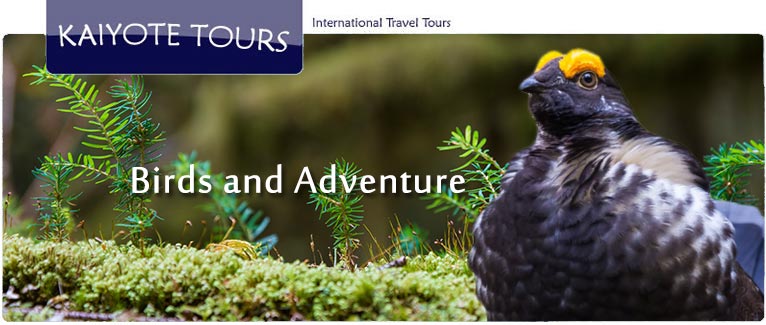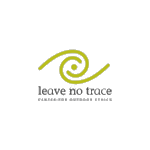Olympic National Park Nature Tours

If you are interested in Olympic National Park Nature Tours, come and join us at Kaiyote Tours!
Special notes: If you are interested in geological and human history, you can find more info at the bottom of the Olympic Home Page. If you are interested in maritime history, you can find info about the early explores by scrolling down on this page.
Birding and Nature Tours in Olympic National Park
We offer both single-day trips and multi-day tours for birding, photography and nature. These tours can be either private or you can join an existing tour. Below you will find info about our tours. From the ocean to the mountains and the rainforest in between, there are five major life zones in this this amazing ecosystem!
Over 300 different species of birds have been identified in Olympic National Park. 1,450 different species of vascular plants, hundreds of mosses and non-vascular plants, 73 different species of mammals, 13 amphibians, 4 species of reptiles, 40 species of fish and more than a few insects reside in Olympic National Park. There is a lot to see and learn. Please contact us if you have any special requests.
Click here for a list of BIRDS we have seen on the Olympic Peninsula
Pricing for full day private tours: 1 - 3 people = $420, please contact us for 4 or more people.
Not included: Olympic National Park entrance fee. If you already have a pass, please bring it along. Lunch, snacks, and water are not included.
Multi-day Tours: We also offer 5-day and 10-day Nature Tours in Washington and the Olympic Peninsula. Please visit our Washington page for more details.
Call us at 970-556-6103 or email us at KaiyoteTours@gmail.com to book your trip!
If you need gear, we can supply it at no extra charge. Just let us know in advance.
Suggested to bring:
1) Backpack for your gear
2) Rain gear or rain poncho or umbrella
3) Refillable water bottle
4) Sunscreen and bug spray
5) Hats for both sun and warmth
6) Binoculars
7) Wear Layered comfortable clothes.
Payment and Cancellation Policy
Full payment is due 5-days prior to tour. There are no refunds within 5-days of tour, but if you need to cancel you can get credit towards a future tour. We accept Visa, MasterCard, Discover, American Express and PayPal.
Kaiyote Tours is authorized by the National Park Service, Department of Interior, to conduct services in Olympic National Park. Kaiyote Tours holds a commercial use permit to conduct services in Olympic National Forest and Washington State Park lands.
The Salish Sea is not always a well-known name, even for people that live in Washington state. Most people are familiar with names like Puget Sound, the Strait of Juan de Fuca, Hood Canal, the Strait of Georgia and the names of many small inlets and channels, but if you put all this water together, you have what is called the Salish Sea. The name "Salish" refers to a diverse group of native people who have been living in the area for thousands of years; some 50 different tribes. Early explorers from Europe were looking for a northwest passage, when they found the Salish Sea.
In 1592 it is believed that a Greek explorer named Juan de Fuca, who was exploring Mexico, sailed as far north as Cape Flattery and found the entrance to the Salish Sea and what is now called the Strait of Juan de Fuca. Many of the early explorers were only interested in trade routes and fur trading and it wasn't until the great expeditions of the late 1700's when most of the Pacific Northwest was charted by both the Spanish and English. John Meares, best known for the Nootka Crisis of 1789 and who nearly started a war between the Spanish and English, sailed up the Pacific Coast in 1788 and seeing the highest peak on the Olympic Peninsula, name it Mount Olympus for the gods. In 1791, Francisco de Eliza name Port Angeles, "Señora de los Ángeles". Sailing with Lieutenant Eliza was Manuel Quimper, who navigated and charted the San Juan Islands. Quimper also recorded many of the customs of local tribes throughout the area, including tribes of the Olympic Peninsula.
Captain George Vancouver sailed into the Strait of Juan de Fuca in 1792 as part of his "world tour" expedition of 1791–1795 on the HMS Discovery. Although Vancouver was disappointed to find that a Spaniard named Lieutenant Eliza Francisco de Eliza had arrived and charted the area first, Vancouver kept many of the Spanish names and even traded and used maps written by the Eliza expedition. Vancouver named Puget Sound after his friend, Peter Puget, a Huguenot lieutenant, who helped explore that area. Much of the area is either name by or for Captain Vancouver. Vancouver returned to England in 1795, received little recognition for his work and died three years later at the age of 40. In 2008 scuba divers recovered a 900 lb. anchor off the coast of Whidbey Island. It is believed to be the lost anchor from the HMS Chatham that was with the Vancouver expedition of 1792. Tall ships still sail the waters today. Although the inland waters of the Salish Sea are shielded from ocean storms, the wind and weather can still create big waves and dangerous waters. Some of the widest parts of the Salish Sea are 25 - 35 miles across.
Cape Flattery is the most northwest point in the "Lower 48". It is located on the Olympic Peninsula and within the Makah Tribe Reservation. It was named by Captain James Cook in 1779. After passing Cape Flattery, Captain Cook failed to notice the entrance of the Strait of Juan de Fuca due to bad weather, and continued to sail north to Nootka Sound on Vancouver Island.
Deception Pass is a narrow waterway connecting the largest part of the Salish Sea to Skagit Bay. Tidal currents can reach 8 knots (9.2 mph), causing dangerous tides and whirlpools. It was named by Captain Vancouver because he had been deceived thinking that Whidbey Island was a peninsula. James Whidbey was a navel engineer on the Vancouver expedition. Whidbey Island is now home to a Naval Air Station with 17 active duty squadrons and 3 Ready Reserve squadrons.
The Pacific Northwest coastline is spectacular. It is abundant with sea life and life along the shore. The weather and geology have shaped and sculptured the land and created a place like nowhere else on earth. The towering rock formations are called "Sea Stacks" and are home to nesting birds and other marine life. These sea stacks are also the reason that much of the northwest coast is called "Shipwreck Coast". The list of shipwrecks is long and continues to grow still today. Many of the sea stacks are only exposed at low tides and are difficult to see at night. Every 12 hours and 25 minutes, the tide comes and goes. This is half of the amount of time it takes for the moon to orbit the earth and as it does, the moon pulls the ocean water around with it. When the tide is out, meaning it is low tide, the abundance of amazing life in the tidal zone is exposed.
Wildlife: The waters of the Salish Sea are home to about 75 Orcas. They are a fish-eating population, existing almost exclusively on salmon. Most of the Orcas are named and "Granny" or J2 of the J-pod is believed to have lived at least 80 years (some say 105 years). In the wild, Orcas generally live long lives of 60 - 80 years and have close family relations and unique cultures.
Dungeness Crab is named after the Port of Dungeness, Washington on the Olympic Peninsula. Dungeness Crab will completely bury themselves in the sand if threatened. Every fall the city of Port Angeles has a Dungeness Crab Festival.
Tufted Puffin Fratercula cirrhata is a sea bird in the Auk family, also known as Alcids. Male and females are identical and grow to 1.6 lbs and 14 inches long. Protection Island Reserve, just off the coast of Port Townsend, provides protected nesting grounds for 70% of the Salish Sea's puffin population. Protection Island was named by Captain Vancouver in 1792.
Sea Otters are in the weasel family and rarely leave the water, spending most of their lives "a-float". Because of their extremely warm, thick coat, they were hunted to near extinction for the fur industry. In 1970, sixty sea otters were released in the waters off the Washington coast and the population has recovered to over 2,000. Sea Otters use rocks as tools to open mollusks and sea urchins for food.
Harbor Seals are a very common mammal in the Salish Sea. They can live up to 35 years and weigh up to 300 lbs. Pups are born on shore and can swim and dive within hours. Harbor Seals are "true seals" and do not have ear flaps, only an ear canal.
The Salish Sea is also home to both California and Steller's Sea Lions. Georg Wilhelm Steller was on Vitus Bering's 1740 expedition to the far northern parts of North America. The journey ended up shipwrecked on what is now called Bering Island and half the crew perished, including Bering, from scurvy. Steller survived and five species were names after him, including the Steller's Jay.











 Follow
Follow

